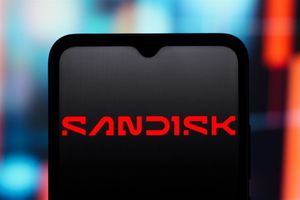Only Program that has Demonstrated Significant Vision Protection in Standard and Low Light Conditions and Significant Preservation of Photoreceptors in the Fovea Region Critical for Visual Acuity
ARCHER II Phase 3 Pivotal Program in GA Underway with Data Expected Second Half 2026
BRISBANE, Calif., Sept. 09, 2024 (GLOBE NEWSWIRE) -- Annexon, Inc. (Nasdaq: ANNX), a biopharmaceutical company advancing novel complement therapies for neuroinflammatory diseases of the body, brain, and eye, today announced the Company will present analyses of ANX007 from the completed Phase 2 ARCHER trial in geographic atrophy (GA) at the Retina Society’s 57th annual scientific meeting being held September 11-15 in Lisbon, Portugal, and at the 24th annual Euretina Congress being held September 19–22 in Barcelona, Spain. ANX007 is a first-in-kind, non-pegylated antigen-binding fragment (Fab) designed to block C1q locally in the eye with an intravitreal formulation.
“The randomized ARCHER data for ANX007 in GA demonstrated broad-based protection of vision in standard and low light conditions, along with significant protection of visual structures in key regions of the eye important to visual acuity. Based on these data, we have initiated a Phase 3 pivotal ARCHER II trial to further evaluate the potential of ANX007 to be the first treatment to protect vision in GA,” said Douglas Love, president and chief executive officer of Annexon. “We look forward to sharing these findings as part of podium presentations at the upcoming annual meetings for the Retina Society and Euretina Congress in Europe, and hosting a symposium with leading global experts to discuss the mechanism of action and significant opportunity for ANX007 to transform the GA treatment landscape.”
Details of the presentations are as follows:
Retina Society’s 57th Annual Scientific Meeting
“Preservation of Photoreceptors and Prevention of Visual Acuity Loss by ANX007 in Geographic Atrophy (GA) in the Phase 2 ARCHER Trial”
- Session: Podium presentation
- Presenter: Dr. Glenn J. Jaffe, Duke Department of Ophthalmology, North Carolina, US
- Date/Time: Saturday, September 14, 2024, 10:28 am CEST
- Location: Four Seasons Hotel Ritz, Lisbon, Portugal
24th Annual Euretina Congress
“Preservation of Vision by ANX007 in Geographic Atrophy: Clinical Results from the Phase 2 ARCHER Trial”
- Session: Podium presentation
- Presenter: Dr. Usha Chakravarthy, Royal Victoria Hospital (The Belfast Trust) and Queens University of Belfast, Northern Ireland
- Date/Time: Thursday, September 19, 2024, 4:30 pm CEST
- Location: CCIB Barcelona, Spain
“Effect of ANX007 on Protecting Central Macular Ellipsoid Zone and RPE and Association with Visual Acuity in the Phase 2 ARCHER GA Study”
- Session: E-poster presentation
- Presenter: Dr. Paulo Eduardo Stanga, The Retina Clinic London and Institute of Ophthalmology, University College London, UK
Annexon Sponsored Symposium
“C1q Driven Neurodegeneration in GA and Relationship to Structure”
- Dr. Jeff Heier, Ophthalmic Consultants of Boston, US and an investigator in ARCHER
“ANX007: Visual Acuity Protection and Safety in the Phase 2 ARCHER Trial”
- Dr. Usha Chakravarthy, Royal Victoria Hospital (The Belfast Trust) and Queens University of Belfast, Northern Ireland
“Linking Structure to Function: Protection of Vision Associated Structures with ANX007”
- Dr. Paulo Eduardo Stanga, The Retina Clinic London and Institute of Ophthalmology, University College London, UK
Annexon Sponsored Symposium: “Protection of Vision and Structure in GA”
- Presenters:
- “C1q Driven Neurodegeneration in GA and Relationship to Structure”
- Dr. Jeff Heier, Ophthalmic Consultants of Boston, US and an investigator in ARCHER
- “ANX007: Visual Acuity Protection and Safety in the Phase 2 ARCHER Trial”
- Dr. Usha Chakravarthy, Royal Victoria Hospital (The Belfast Trust) and Queens University of Belfast, Northern Ireland
- “Linking Function to Structure: Protection of Vision-Associated Structures with ANX007”
- Dr. Paulo Eduardo Stanga, The Retina Clinic London and Institute of Ophthalmology, University College London, UK
- “C1q Driven Neurodegeneration in GA and Relationship to Structure”
- Date/Time: Saturday, September 21, 2024, 1:00 pm CEST
- Location: CCIB Barcelona, Spain
About ANX007 and Phase 2 ARCHER Trial
ANX007 is an antigen-binding fragment (Fab) antibody designed as a first-in-kind therapeutic to selectively inhibit C1q, the initiating molecule of the classical complement pathway and a key driver of neurodegeneration. In GA, C1q binds to photoreceptor synapses early in the disease process, causing aberrant activation of the classical pathway with synapse loss, inflammation and neuronal damage that results in vision loss. Intravitreal administration of ANX007 fully stops C1q and classical pathway activation. In animal models, the murine analog of ANX007 protects against loss of photoreceptor synapses and cells to preserve function. ANX007 has been granted Fast Track designation from the Food and Drug Administration and is the first therapeutic candidate for the treatment of GA to receive Priority Medicine (PRIME) designation in the EU, which provides early and proactive support to developers of promising medicines that may offer a major therapeutic advantage over existing treatments or benefit to patients without treatment options.
In the randomized, multi-center, double-masked, sham-controlled Phase 2 ARCHER clinical trial, ANX007 demonstrated consistent protection against vision loss across multiple measures in a broad population of patients with GA. ANX007 provided statistically significant, time and dose-dependent protection from vision loss as measured by ≥ 15 letter loss on reading an eye chart with best corrected visual acuity (BCVA≥15), the widely accepted and clinically-meaningful functional endpoint. Significant protection from vision loss was also shown in other prespecified measures of BCVA and visual function, including low luminance visual acuity (LLVA) and low luminance visual deficit (LLVD). ANX007’s treatment effect increased over the course of the on-treatment portion of the study, suggesting that ANX007 may provide a growing and durable treatment effect over time. While benefit gained against vision loss was maintained during the subsequent six-month off-treatment period, the rate of decline for BCVA ≥ 15-letter vision after treatment termination began to parallel that of sham, providing additional support for the observed on-treatment protection. ANX007 was also shown to protect key retinal structures important for vision, including significant protection of photoreceptors as measured by optical coherence tomography (OCT) and supported by slowing of loss of retinal pigment epithelial cells (RPE) in the fovea, as measured by fundus autofluoresence (FAF). ANX007 was generally well-tolerated through month 12, with no increase in choroidal neovascularization (CNV) rates between the treated and sham arms and no events of retinal vasculitis reported.
About Geographic Atrophy
Geographic atrophy (GA) is an advanced form of dry age-related macular degeneration (AMD), an eye disease that is the leading cause of blindness in the elderly. GA is a chronic progressive neurodegenerative disorder of the retina involving the loss of photoreceptor synapses and cells in the outer retina. GA affects an estimated one million people in the United States and eight million people globally, severely limiting their independence and causing frustration, anxiety and emotional hardship. Effective treatments that preserve vision are still needed, as no currently approved therapies have been shown in clinical trials to significantly prevent vision loss.
About Annexon
Annexon Biosciences (Nasdaq: ANNX) is a biopharmaceutical company advancing a late-stage clinical platform of novel therapies for people living with devastating classical complement-mediated neuroinflammatory diseases of the body, brain, and eye. Annexon’s novel scientific approach targets upstream C1q to block the classical complement inflammatory cascade before it starts, and its therapeutic candidates are designed to provide meaningful benefits across multiple autoimmune, neurodegenerative and ophthalmic diseases. With proof-of concept data in Guillain-Barré syndrome, Huntington’s disease and geographic atrophy, Annexon is rigorously advancing its mid-to late-stage clinical trials to bring their potential treatments to patients as quickly as possible. To learn more visit annexonbio.com.
Forward Looking Statements
This press release contains forward-looking statements within the meaning of Section 27A of the Securities Act of 1933, as amended, and Section 21E of the Securities Exchange Act of 1934, as amended. In some cases, you can identify forward-looking statements by terminology such as “aim,” “anticipate,” “assume,” “believe,” “contemplate,” “continue,” “could,” “design,” “due,” “estimate,” “expect,” “goal,” “intend,” “may,” “objective,” “plan,” “positioned,” “potential,” “predict,” “seek,” “should,” “suggest,” “target,” “on track,” “will,” “would” and other similar expressions that are predictions of or indicate future events and future trends, or the negative of these terms or other comparable terminology. All statements other than statements of historical facts contained in this press release are forward-looking statements. These forward-looking statements include, but are not limited to, the ability of ANX007 to block upstream C1q, the clinical and regulatory status of ANX007; ANX007’s distinct potential neuroprotective mechanism of action and potential to provide protection from vision loss; the potential therapeutic benefit of ANX007; and Annexon’s ability to rigorously advance mid- to late-stage clinical trials and continue development of the company’s portfolio. Forward-looking statements are not guarantees of future performance and are subject to risks and uncertainties that could cause actual results and events to differ materially from those anticipated, including, but not limited to, risks and uncertainties related to: the ongoing off-treatment follow-up portion of the ARCHER trial and final results from the ARCHER trial; the company’s history of net operating losses; the company’s ability to obtain necessary capital to fund its clinical programs; the early stages of clinical development of the company’s product candidates; the effects of public health crises on the company’s clinical programs and business operations; the company’s ability to obtain regulatory approval of and successfully commercialize its product candidates; any undesirable side effects or other properties of the company’s product candidates; the company’s reliance on third-party suppliers and manufacturers; the outcomes of any future collaboration agreements; and the company’s ability to adequately maintain intellectual property rights for its product candidates. These and other risks are described in greater detail under the section titled “Risk Factors” contained in the company’s Annual Report on Form 10-K and Quarterly Reports on Form 10-Q and the company’s other filings with the SEC. Any forward-looking statements that the company makes in this press release are made pursuant to the Private Securities Litigation Reform Act of 1995, as amended, and speak only as of the date of this press release. Except as required by law, the company undertakes no obligation to publicly update any forward-looking statements, whether as a result of new information, future events or otherwise.
Investor Contact:
Joyce Allaire
LifeSci Advisors, LLC
jallaire@lifesciadvisors.com
Media Contact:
Sheryl Seapy
Real Chemistry
949-903-4750
sseapy@realchemistry.com






